Ginger
How to submit an article:
- Registered users can submit any published journal article that has a unique DOI (Digital Object Identifier) name or link to Research Hub.
- For example, you can paste the full DOI link:
https://doi.org/10.1109/5.771073or just the DOI name:10.1109/5.771073into the field above and click submit. - The person who is first to submit a valid article to Research Hub will forever be credited for it, and every article submission earns you +6 Research Points.
Also known as: Sheng Jiang
Related Topics
Published research studies are articles that present the findings of original research that has undergone a peer-review process and has been made publicly available in scholarly journals, books or other media.

Physiological Mechanisms by Which the Functional Ingredients in Beer Impact Human Health
2024 Jun 29 Molecules Zeng Y, Ahmed HGMD, Li X, Yang L, Pu X, Yang X, et al.
Review Article Melatonin Barley BeerBeer, specifically low-purine and high-active ingredient beer such as ginger, ginseng, and coix-lily, possess functional ingredients contributing to controlling chronic human diseases.
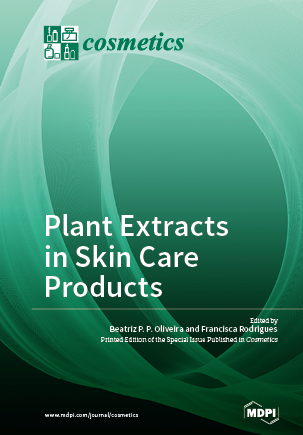
Effect of Phenolic Compounds Extracted from Turmeric (Curcuma longa L.) and Ginger (Zingiber officinale) on Cutaneous Wound Healing in Wistar Rats
2023 Oct 02 Cosmetics Bouchama C, Zinedine A, Rocha JM, Chadli N, El Ghadraoui L, Chabir R, et al.
Experimental Study Animal Study GingerPhenolic extracts from turmeric and ginger have significant anti-inflammatory effects and enhance wound healing in Wistar rats.

Manufacture and Evaluation of Novel Chocolate for Girls' Dysmenorrhea
2023 Mar 01 Journal of Food and Dairy Sciences Shalaby, A, Moawad O, Mostafa M
Randomised Controlled Trial Dark Chocolate Iron Field Mint CinnamonCinnamon, ginger, and mint enhanced chocolates effectively reduce menstrual pain and improve blood iron levels without increasing body weight or negatively affecting cholesterol.
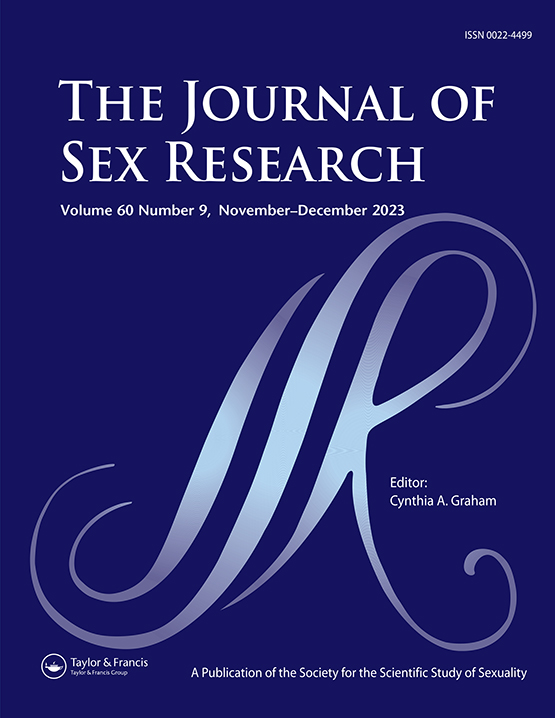
Effects of Ginger on Disgust, Sexual Arousal, and Sexual Engagement: A Placebo-Controlled Experiment
2023 Feb 21 The Journal of Sex Research Wen G, Zhang Y, Nyman TJ, Jern P, Santtila P
Cohort Study Sexual Health GingerGinger consumption could counteract the negative influence of disgust, induced by sexual body fluids, on sexual arousal in individuals.
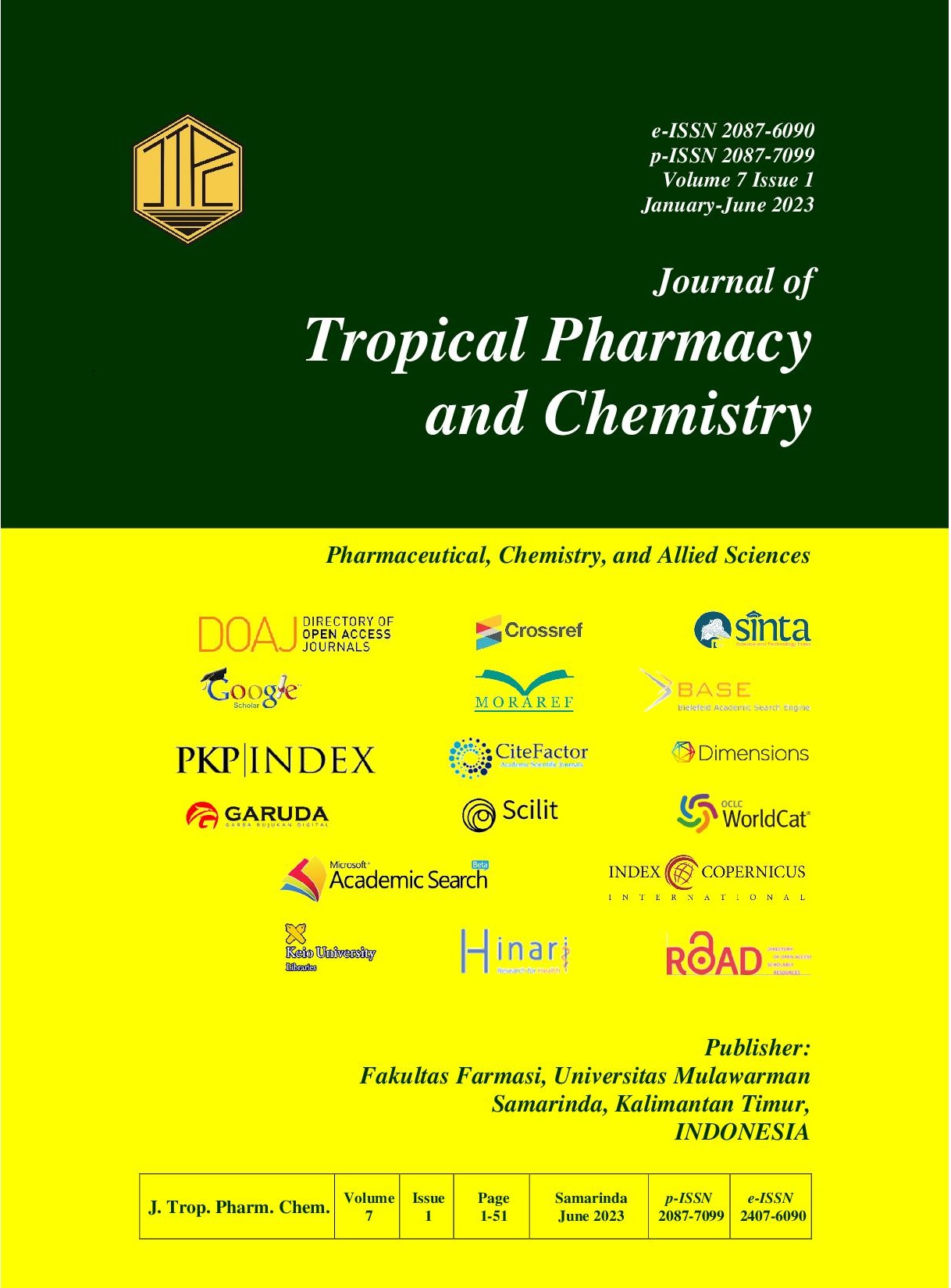
Effect of Combination of Dark Chocolate and Herbal Ingredients for Dysmenorrhea in Late Adolescents
2023 Jan 17 Journal of Tropical Pharmacy and Chemistry Azizah RNP, Anggreini P, Prasetya F
Randomised Controlled Trial Period Pain Dark Chocolate Honey SambilotoThe combination of dark chocolate with herbs could be one of the therapies for period pain.
Research insights are moderated by the Research Hub team and offer an at-a-glance overview of interesting research findings.

2024 Molecules
Beer, specifically low-purine and high-active ingredient beer such as ginger, ginseng, and coix-lily, possess functional ingredients contributing to controlling chronic human diseases.
Review Article Barley Beer Melatonin
Physiological Mechanisms by Which the Functional Ingredients in Beer Impact Human Health
Zeng Y, Ahmed HGMD, Li X, Yang L, Pu X, Yang X, et al.

2023 Cosmetics
Phenolic extracts from turmeric and ginger have significant anti-inflammatory effects and enhance wound healing in Wistar rats.
Experimental Study
Effect of Phenolic Compounds Extracted from Turmeric (Curcuma longa L.) and Ginger (Zingiber officinale) on Cutaneous Wound Healing in Wistar Rats
Bouchama C, Zinedine A, Rocha JM, Chadli N, El Ghadraoui L, Chabir R, et al.

2023 Journal of Food and Dairy Sciences
Cinnamon, ginger, and mint enhanced chocolates effectively reduce menstrual pain and improve blood iron levels without increasing body weight or negatively affecting cholesterol.
Randomised Controlled Trial Cinnamon Dark Chocolate Field Mint Iron
Manufacture and Evaluation of Novel Chocolate for Girls' Dysmenorrhea
Shalaby, A, Moawad O, Mostafa M

2023 The Journal of Sex Research
Ginger consumption could counteract the negative influence of disgust, induced by sexual body fluids, on sexual arousal in individuals.
Cohort Study Sexual Health
Effects of Ginger on Disgust, Sexual Arousal, and Sexual Engagement: A Placebo-Controlled Experiment
Wen G, Zhang Y, Nyman TJ, Jern P, Santtila P

2023 Journal of Tropical Pharmacy and Chemistry
The combination of dark chocolate with herbs could be one of the therapies for period pain.
Randomised Controlled Trial Dark Chocolate Honey Period Pain Sambiloto
Effect of Combination of Dark Chocolate and Herbal Ingredients for Dysmenorrhea in Late Adolescents
Azizah RNP, Anggreini P, Prasetya F
Review Articles
Review articles summarise and critically evaluate the current state of research on a specific topic or field by synthesising multiple primary research studies.

Physiological Mechanisms by Which the Functional Ingredients in Beer Impact Human Health
2024 Jun 29 Molecules Zeng Y, Ahmed HGMD, Li X, Yang L, Pu X, Yang X, et al.
Review Article Melatonin Barley BeerBeer, specifically low-purine and high-active ingredient beer such as ginger, ginseng, and coix-lily, possess functional ingredients contributing to controlling chronic human diseases.
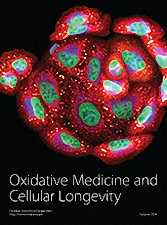
Ginger for Healthy Ageing: A Systematic Review on Current Evidence of Its Antioxidant, Anti-Inflammatory, and Anticancer Properties
2022 May 09 Oxidative Medicine and Cellular Longevity Ozkur M, Benlier N, Takan I, Vasileiou C, Georgakilas AG, Pavlopoulou A, et al.
Systematic Review Ginger Antiviral Anti-AgeingGinger, native to Southeast Asia, possesses antioxidant and antiviral properties, contributing to healthy ageing and potential prevention of age-related disorders.

Effectiveness of Nutritional Ingredients on Upper Gastrointestinal Conditions and Symptoms: A Narrative Review
2022 Feb 05 Nutrients Schulz RM, Ahuja NK, Slavin JL
Review Article Melatonin Ginger Peppermint Caraway Alginate GERDGinger, peppermint and caraway oil combination showed strong effectiveness in managing upper gastrointestinal complaints, with melatonin and marine alginate demonstrating moderate evidence.
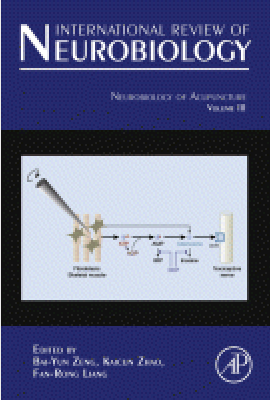
Nutraceutical and phytotherapeutic support in pregnancy
2022 Jan International Review of Neurobiology Dillard DM
In the chapter that follows, herbal supplements regularly used during pregnancy, including German and Roman chamomile, echinacea, garlic, ginger, lavender, lemon balm, mallow, marshmallow, the mints, psyllium, and witch hazel, are reviewed for available evidence.
Review Article Pregnancy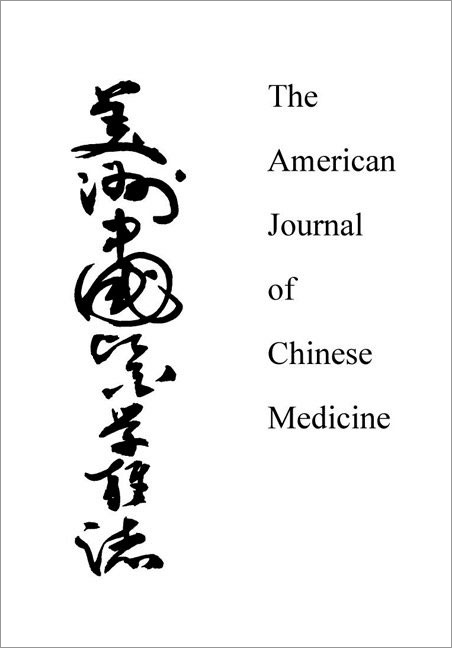
Zingiber officinale: A Systematic Review of Botany, Phytochemistry and Pharmacology of Gut Microbiota-Related Gastrointestinal Benefits
2022 Jan The American Journal of Chinese Medicine Lai W, Yang S, Lin X, Zhang X, Huang Y, Zhou J, et al.
Systematic ReviewFresh and dried ginger displays key botanical, phytochemical and ethnopharmacological differences, which are fundamental for their specific clinical uses in treating gastrointestinal issues.
Clinical Trials
Clinical trials are research studies that involve people and are conducted to evaluate the safety and efficacy of new treatments or interventions, such as drugs, medical devices, or behavioural therapies.

Manufacture and Evaluation of Novel Chocolate for Girls' Dysmenorrhea
2023 Mar 01 Journal of Food and Dairy Sciences Shalaby, A, Moawad O, Mostafa M
Randomised Controlled Trial Dark Chocolate Iron Field Mint CinnamonCinnamon, ginger, and mint enhanced chocolates effectively reduce menstrual pain and improve blood iron levels without increasing body weight or negatively affecting cholesterol.

Effect of Combination of Dark Chocolate and Herbal Ingredients for Dysmenorrhea in Late Adolescents
2023 Jan 17 Journal of Tropical Pharmacy and Chemistry Azizah RNP, Anggreini P, Prasetya F
Randomised Controlled Trial Period Pain Dark Chocolate Honey SambilotoThe combination of dark chocolate with herbs could be one of the therapies for period pain.
Dark chocolate was combined with herbal ingredients consisting of turmeric, red ginger, moringa, sambiloto extract, and honey as a beverage (250 mL). —Jinnan C 29 Oct 2023
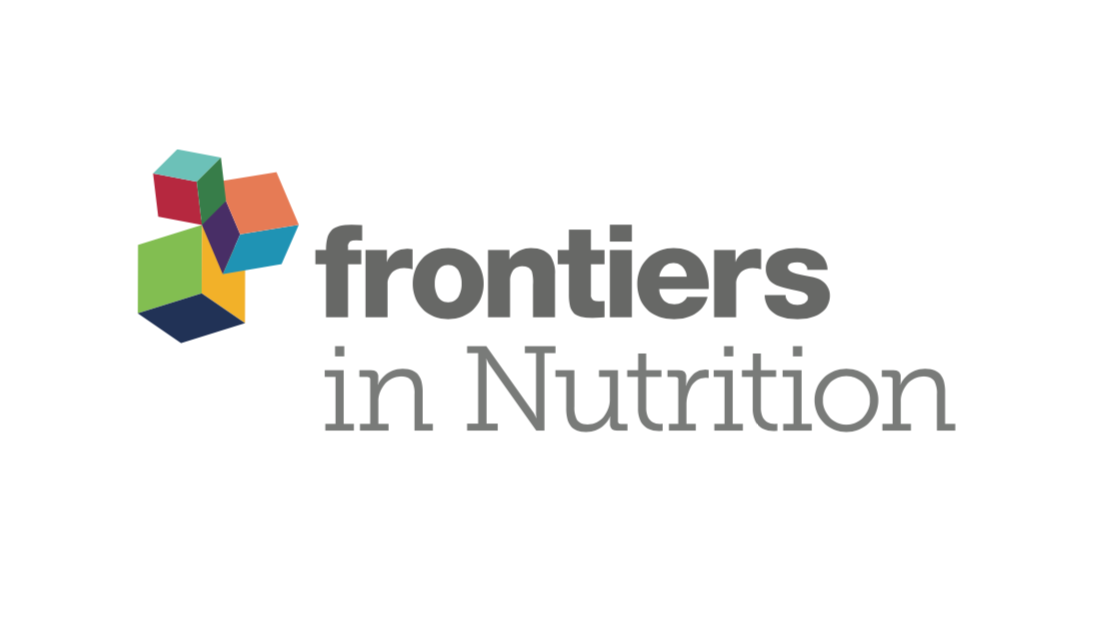
A comparison of the effects of cinnamon, ginger, and metformin consumption on metabolic health, anthropometric indices, and sexual hormone levels in women with poly cystic ovary syndrome: A randomized double-blinded placebo-controlled clinical trial
2022 Nov 29 Frontiers in Nutrition Dastgheib M, Barati-Boldaji R, Bahrampour N, Taheri R, Borghei M, Amooee S, et al.
Randomised Controlled Trial Cinnamon Testosterone Metabolic Syndrome FSH Ginger PCOS Insulin Resistance Metformin Ceylon Cinnamon LHIn women with polycystic ovary syndrome, cinnamon reduced insulin resistance and testosterone levels similar to metformin, and ginger decreased follicle-stimulating and luteinizing hormones.
The Effect of Ginger-chamomile Sachet with Honey on Primary Dysmenorrhea and Associated Symptoms: A Randomized, Double-Blind, Controlled Trial
2020 Sep 09 Current Women s Health Reviews Shabani F, Chabra A, Vakilian K, Bioos S, Bozorgi M, Ayati MH, et al.
Randomised Controlled Trial Ginger Chamomile HoneyThe use of ginger, chamomile, and honey significantly diminished the intensity of dysmenorrhea pain as compared to the use of mefenamic acid.
Evaluation of the Synergism of Medicinal Effects of Chamomile and Ginger on Pain and Symptoms of Primary Dysmenorrhea: A Randomized Controlled Trial
2020 Jan 30 Complementary Medicine journal Shabani F, Zareian MA
Randomised Controlled Trial Period Pain ChamomileThe combination of ginger and chamomile was as effective as mefenamic acid in managing dysmenorrhea pain and more efficient in reducing related symptoms.
Study Protocols
Published study protocols are detailed plans that outline the objectives, methodology, statistical analyses, and organisation of a research study that have been made publicly available for others to review and use as a reference.
Presentation Slides

Review Article
Beer, specifically low-purine and high-active ingredient beer such as ginger, ginseng, and coix-lily, possess functional ingredients contributing to controlling chronic human diseases.
Zeng Y, Ahmed HGMD, Li X, Yang L, Pu X, Yang X, Yang T, Yang J

Experimental Study
Phenolic extracts from turmeric and ginger have significant anti-inflammatory effects and enhance wound healing in Wistar rats.
Bouchama C, Zinedine A, Rocha JM, Chadli N, El Ghadraoui L, Chabir R, Raoui SM, Errachidi F

Randomised Controlled Trial
Cinnamon, ginger, and mint enhanced chocolates effectively reduce menstrual pain and improve blood iron levels without increasing body weight or negatively affecting cholesterol.
Shalaby, A, Moawad O, Mostafa M

Cohort Study
Ginger consumption could counteract the negative influence of disgust, induced by sexual body fluids, on sexual arousal in individuals.
Wen G, Zhang Y, Nyman TJ, Jern P, Santtila P

Randomised Controlled Trial
The combination of dark chocolate with herbs could be one of the therapies for period pain.
Azizah RNP, Anggreini P, Prasetya F

Randomised Controlled Trial
In women with polycystic ovary syndrome, cinnamon reduced insulin resistance and testosterone levels similar to metformin, and ginger decreased follicle-stimulating and luteinizing hormones.
Dastgheib M, Barati-Boldaji R, Bahrampour N, Taheri R, Borghei M, Amooee S, Mohammadi-Sartang M, Wong A, Babajafari S, Mazloomi SM

Systematic Review
Ginger, native to Southeast Asia, possesses antioxidant and antiviral properties, contributing to healthy ageing and potential prevention of age-related disorders.
Ozkur M, Benlier N, Takan I, Vasileiou C, Georgakilas AG, Pavlopoulou A, Cetin Z, Saygili EI

Review Article
Ginger, peppermint and caraway oil combination showed strong effectiveness in managing upper gastrointestinal complaints, with melatonin and marine alginate demonstrating moderate evidence.
Schulz RM, Ahuja NK, Slavin JL

Systematic Review
Fresh and dried ginger displays key botanical, phytochemical and ethnopharmacological differences, which are fundamental for their specific clinical uses in treating gastrointestinal issues.
Lai W, Yang S, Lin X, Zhang X, Huang Y, Zhou J, Fu C, Li R, Zhang Z
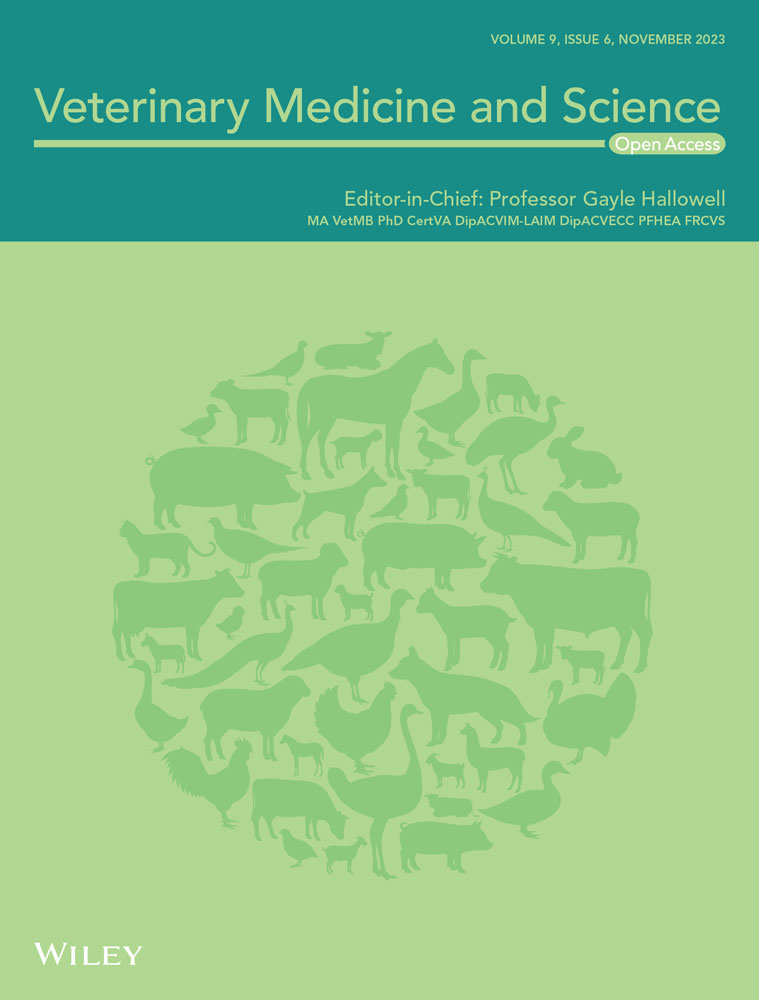
Systematic Review
Ginger significantly improves sperm health, enhancing quality parameters like count, viability, motility, morphology and DNA integrity, thereby boosting fertility.
Gholami‐Ahangaran M, Karimi‐Dehkordi M, Akbari Javar A, Haj Salehi M, Ostadpoor M
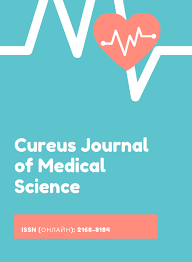
Systematic Review
A systematic analysis indicates that ginger has a higher safety profile than NSAIDs for pain relief, with a smaller number of gastric side effects and fewer kidney risks.
Negi R, Sharma DS, Gaur DR, Bahadur A, Jelly P

Systematic Review
Based on beneficial effects and minimal side effects, ginger may be a potential adjunct treatment for primary dysmenorrhea.
Negi R, Sharma DS, Gaur DR, Bahadur A, Jelly P

Review Article
The fresh rhizoma of Roscoe, a traditional Chinese medicine, has proven effects on the nervous and cardiovascular systems and has antibacterial, antitumor, and antioxidant properties.
Li X, Ao M, Zhang C, Fan S, Chen Z, Yu L
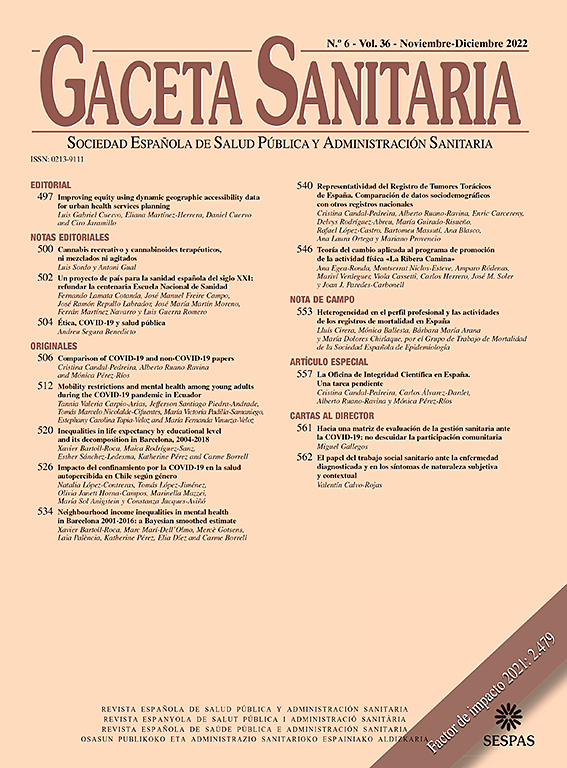
Experimental Study
Ginger honey supplementation does not reduce cortisol levels, however, it significantly increases glutathione and estrogen levels in test mice.
Usman AN, Raya I, Yasmin R, Aliyah , Dirpan A, Arsyad A, Permatasari AE, Sumidarti A, Umami N, Emmasitah

Experimental Study
Ginger supplementation can prevent ethanol-induced reproductive dysfunction by improving hormone levels, reducing oxidative damage, inflammation, and regulating genes involved in testosterone synthesis.
Li N, Xing Y, Sultan AH, Raeeszadeh M, Akbari A, Liu H

Randomised Controlled Trial
The use of ginger, chamomile, and honey significantly diminished the intensity of dysmenorrhea pain as compared to the use of mefenamic acid.
Shabani F, Chabra A, Vakilian K, Bioos S, Bozorgi M, Ayati MH, Nejatbakhsh F
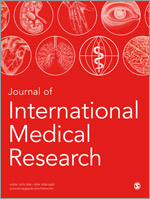
Systematic Review
For primary dysmenorrhoea, cinnamon/fennel/ginger effectively reduced pain intensity, and cinnamon shortened the duration of pain.
Xu Y, Yang Q, Wang X
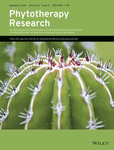
Review Article
Ginger, through various methods, exhibits promising pain reduction effects for conditions such as dysmenorrhea, muscle soreness, osteoarthritis, low back pain, and migraines.
Rondanelli M, Fossari F, Vecchio V, Gasparri C, Peroni G, Spadaccini D, Riva A, Petrangolini G, Iannello G, Nichetti M, Infantino V, Perna S

Systematic Review
Ginger has been effective in a majority of studies, including those that examined the alleviation of nausea and vomiting of pregnancy, digestive function, improvement in the expression level of markers for colorectal cancer risk, and anti-inflammatory functions.
Anh NH, Kim SJ, Long NP, Min JE, Yoon YC, Lee EG, Kim M, Kim TJ, Yang YY, Son EY, Yoon SJ, Diem NC, Kim HM, Kwon SW.

Randomised Controlled Trial
The combination of ginger and chamomile was as effective as mefenamic acid in managing dysmenorrhea pain and more efficient in reducing related symptoms.
Shabani F, Zareian MA
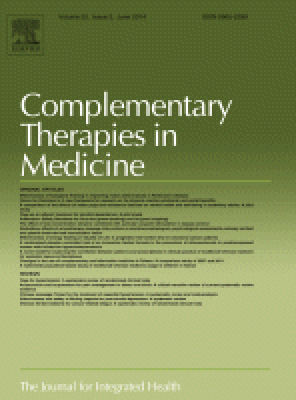
Systematic Review
Our study found ginger is a promising herbal medicine for health care, which is beneficial for nausea and vomiting, metabolic syndrome and pain.
Li H, Liu Y, Luo D, Ma Y, Zhang J, Li M, Yao L, Shi X, Liu X, Yang K.
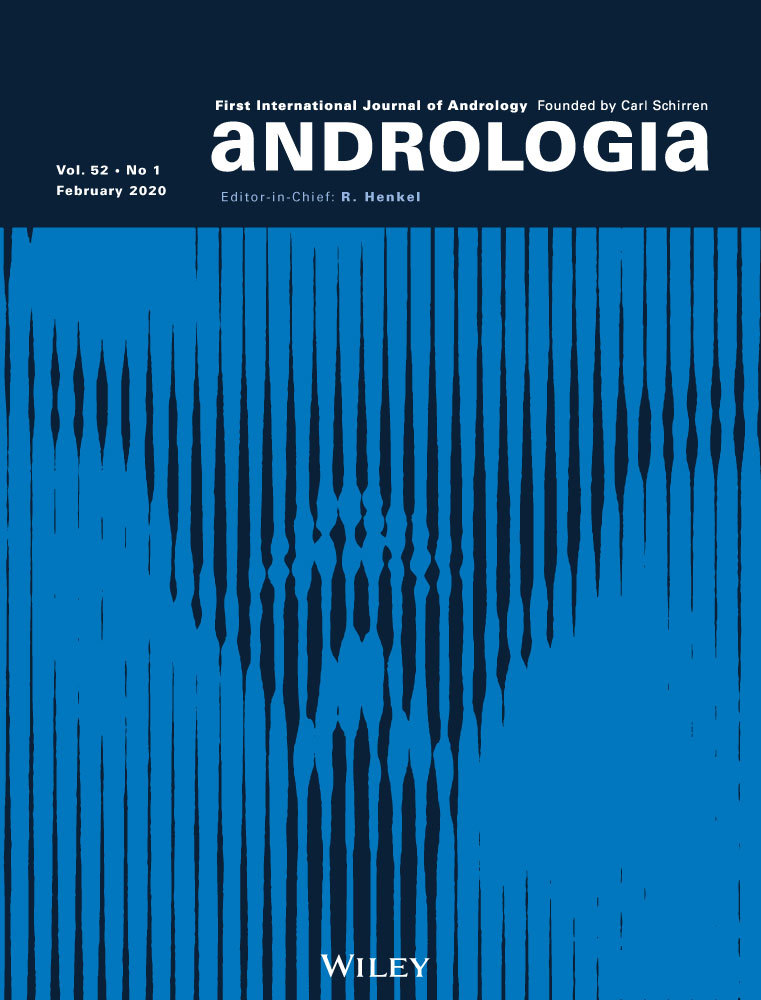
Systematic Review
Ginger enhances semen quality and improves sperm parameters, an impact linked to increased levels of gonadal hormones, decreased cell damage, and valued nutrients in ginger.
Banihani SA
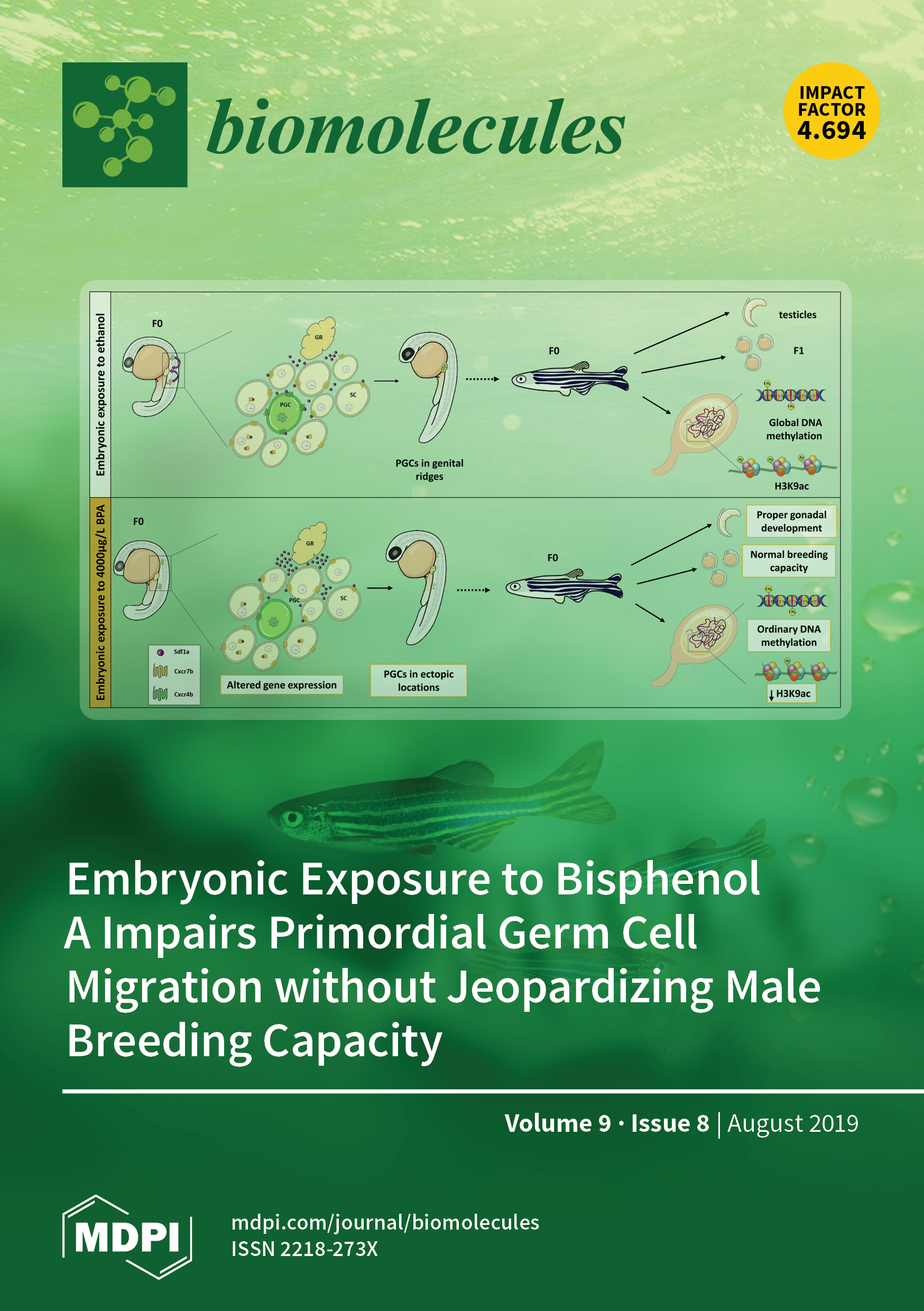
Systematic Review
Ginger supplementation enhances the production of testosterone in males by reducing oxidative stress and increasing luteinizing hormone production, cholesterol in testes, and blood flow to the testes.
Banihani SA
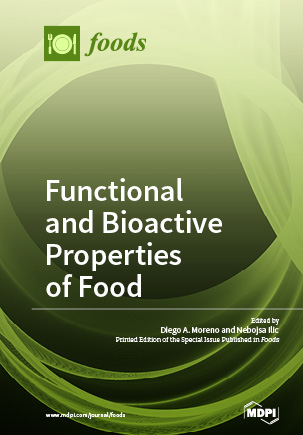
Systematic Review
Ginger emerges as a safe and effective treatment for nausea and vomiting in early pregnancy.
Stanisiere J, Mousset PY, Lafay S
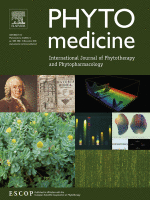
Systematic Review
Ginger supplementation has a favorable effect on levels of triacylglycerol and low-density lipoprotein cholesterol, especially in doses of 2 grams or less per day.
Pourmasoumi M, Hadi A, Rafie N, Najafgholizadeh A, Mohammadi H, Rouhani MH

Systematic Review
Oral ginger could be an effective treatment for menstrual pain in dysmenorrhea.
Chen X. Chen, Bruce Barrett, Kristine L. Kwekkeboom,
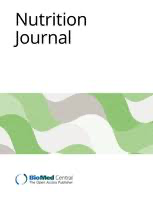
Systematic Review
Ginger could be considered a harmless and possibly effective alternative option for women suffering from nausea and vomiting during pregnancy.
Viljoen, E., Visser, J., Koen, N. et al.
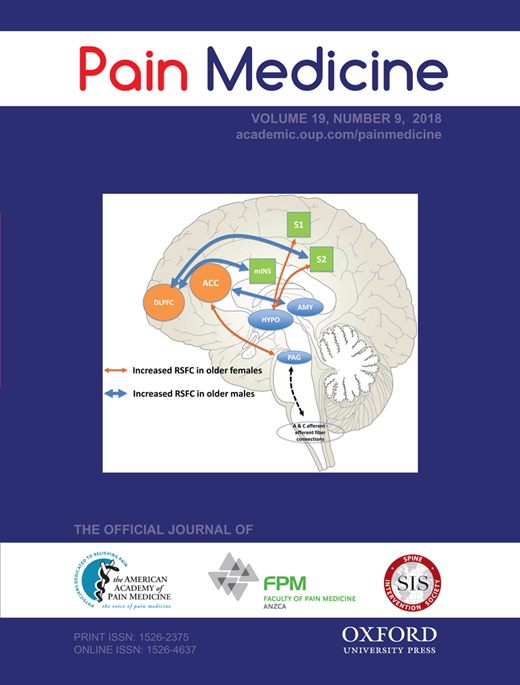
Systematic Review
Ginger can reduce the direct activation of type 3 and 4 afferent nerve fibers by substances such as bradykinin and sensitization of afferent fibers by prostaglandins and cytokines.
Rohini Terry, PhD, Paul Posadzki, PhD, Leala K. Watson, BSc (Hons), Edzard Ernst, MD, PhD
Executive Summary
Write an executive summary in the form of a blog article on the topic of "Research into Chinese medicine treatment for Ginger" summarising the research below and using language that can be easily understood by patients and avoiding medical jargon using a professional and caring tone of voice.
Write an executive summary in the form of a blog article on the topic of "Researched Chinese medicine treatments for Ginger" summarising the research below in an objective and easy to understand way, and using language that can be easily understood by patients. Group the article into Chinese medicine treatments first, followed by nutrition and other treatments. Avoid using medical jargon and use a professional and caring tone of voice.
Write me a concise but easy to understand executive summary on the topic of "Chinese medicine treatments for Ginger" based on the following research that I will give you. Your summary should be 2 paragraphs long in Australian English spelling and include references to the studies.
A Review Article published in 2024 in the journal Molecules found that Beer, specifically low-purine and high-active ingredient beer such as ginger, ginseng, and coix-lily, possess functional ingredients contributing to controlling chronic human diseases. The study incorporated a comprehensive analysis of information derived from PubMed, Google, CNKI, and ISI Web of Science databases, integrating published data from 1997 to 2024. The researchers set out to elucidate the physiological impacts of beer's functional ingredients, with an intense concentration on those exerting potential health benefits. The types of beer explored encompass those produced from pure barley malt, presenting low purine and high active ingredients. More specific attention was directed towards uniquely brewed variants such as ginger, ginseng, and coix-lily beer, which replicate ancestral practices from approximately 9000 years ago. The discussion of results inferred the observable health benefits of beer in combating 26 chronic diseases, attributing these effects primarily to the physiological behavior of the beer's polyphenols, melatonin, minerals, bitter acids, vitamins, and peptides. Importantly, these health impacts of beer were found to closely resemble those demonstrated by barley, signifying the consequential role of barley's functionality in the equation. Furthermore, it was highlighted that the production of low-purine beer could be facilitated through enzymatic and biological degradation and adsorption of purines, in conjunction with the addition of dandelion. This research, hence, provides a crucial scientific foundation for the advancement of functional beers that foster health benefits.
A Experimental Study published in 2023 in the journal Cosmetics found that Phenolic extracts from turmeric and ginger have significant anti-inflammatory effects and enhance wound healing in Wistar rats. The study utilised the solid-liquid extraction method to obtain phenolic extracts from turmeric and ginger rhizomes. Using Wistar rats as a biological model, the researchers examined the anti-inflammatory effects of the extracts by observing the decrease in edema volume in the rat's hind paw following treatment. Moreover, the healing process of purposefully induced burns on the rat's dorsal region was monitored to evaluate the healing activity. In the discussion of the results, it was observed that the application of creams containing the mentioned extracts resulted in complete healing after 19 days, a marked improvement compared to the control group, which only achieved 60% healing. The extracts demonstrated different levels regarding tissue repair at day 14, showing their respective potency. The study also identified diverse molecular weight distribution of phenolic compounds within the extracts, suggesting potential influence on how they affect anti-inflammatory and wound healing activities.
A Randomised Controlled Trial published in 2023 in the journal Journal of Food and Dairy Sciences found that Cinnamon, ginger, and mint enhanced chocolates effectively reduce menstrual pain and improve blood iron levels without increasing body weight or negatively affecting cholesterol. The methodology of the study involved a sample of 48 female student volunteers, aged 18-25, from Mansoura University who were experiencing dysmenorrhea. These volunteers were divided into eight groups of six and each group was given a different type of chocolate: regular chocolate, chocolate without herbal powder, chocolate with cinnamon powder, chocolate with cinnamon oil, chocolate with ginger powder, chocolate with ginger oil, chocolate with mint powder, and chocolate with mint oil. Discussion of the results demonstrated that the consumption of chocolates supplemented with cinnamon, ginger, and mint powders and their respective essential oils led to a significant improvement in participants' hemoglobin scores compared to a control group which consumed normal chocolate. Furthermore, it was found that these chocolates had a positive influence on serum total cholesterol, triglycerides, high-density lipoprotein, and low-density lipoprotein scores. Importantly, chocolate consumption did not lead to an increase in the participants' body mass index, proving that these chocolate variants could reduce menstrual pain and lift blood iron levels without instigating weight gain or having adverse effects on cholesterol levels.
A Cohort Study published in 2023 in the journal The Journal of Sex Research found that Ginger consumption could counteract the negative influence of disgust, induced by sexual body fluids, on sexual arousal in individuals. The researchers conducted an experiment involving 247 participants, who were either given ginger or placebo pills. Participants were then required to complete tasks involving either sexual body fluids or neutral fluids. After completing their tasks, the participants were shown and asked to respond to questions about erotic stimuli which consisted of either nude or semi-nude pictures of individuals of the opposite sex. This study showed that tasks involving sexual body fluids caused disgust. This feeling of disgust led to decreased sexual arousal in women. Interestingly, the consumption of ginger was found to counteract the inhibiting effect of disgust on sexual arousal. Additionally, the disgust caused by the sexual body fluids tasks also increased disgust towards subsequent erotic stimuli. However, ginger consumption was found to increase sexual arousal towards the erotic stimuli in both men and women who had performed the neutral fluids tasks.
A Randomised Controlled Trial published in 2023 in the journal Journal of Tropical Pharmacy and Chemistry found that The combination of dark chocolate with herbs could be one of the therapies for period pain. This test was conducted on 30 respondents who were divided into three groups, namely the positive control group (K), dark chocolate (C), and a combination of dark chocolate with herbs (C+H). Dark chocolate was combined with herbal ingredients consisting of turmeric, red ginger, moringa, sambiloto extract, and honey as a beverage 250 mL. The study is quantitative research with quasi-experimental method. Pain measurement using the Numeric Rating Scale (NRS) sheet was given before and 2 hours after treatment. The data was analyzed using paired t-test. State the results of the values obtained the combination of dark chocolate and herbs showed a significant reduction in pain before and after treatment (p<0.05).
A Randomised Controlled Trial published in 2022 in the journal Frontiers in Nutrition found that In women with polycystic ovary syndrome, cinnamon reduced insulin resistance and testosterone levels similar to metformin, and ginger decreased follicle-stimulating and luteinizing hormones. In the methodology of the study, 100 women diagnosed with polycystic ovary syndrome were divided into four groups. Each group received a different treatment: cinnamon, ginger, metformin, or placebo. The dosage for these treatments was 500 mg, three times a day, administered over a period of 8 weeks. The participants' sex hormones, weight revelations, along with glycemic and lipid markers were monitored before and after this period. Several participants were disqualified because of unspecified factors, resulting in a final sample size of 83. In terms of results, all groups saw a decrease in weight and body mass index. The metformin and cinnamon groups specifically had notably decreases in their insulin resistance, meaning that these treatments were effective in improving metabolic health. Additionally, the ginger group experienced a reduction in follicle-stimulating hormone and luteinizing hormone levels unlike the other groups. Testosterone levels were lowered in the metformin and cinnamon groups, but no significant changes in dehydroepiandrosterone were observed in any of the groups. These results indicate the potential use of cinnamon and ginger as alternative treatments in managing polycystic ovary syndrome.
A Systematic Review published in 2022 in the journal Oxidative Medicine and Cellular Longevity found that Ginger, native to Southeast Asia, possesses antioxidant and antiviral properties, contributing to healthy ageing and potential prevention of age-related disorders. The study explored the natural benefits of ginger, a plant native to Southeast Asia renowned for its culinary and medicinal uses. The approach focused on examining the plant's antioxidant, anti-inflammatory, anticancer, antimicrobial, and particularly antiviral properties from its rich collection of antiviral compounds. The process involved digging into accumulated evidence that suggests ginger's role in promoting healthy ageing, reducing morbidity, and prolonging a healthy lifespan, thus providing a natural solution for an age-old problem. In terms of results, the examination of evidence proved affirming. Ginger displayed significant potential in boosting healthy ageing, reducing the risk of age-related disorders, and extending a wholesome life expectancy due to its inherent properties. The plant's antioxidant characteristics played a key role in these outcomes, along with its anti-inflammatory and antiviral attributes. In essence, the research unfolded a rather underexplored potential of a common natural product in tackling age-induced health conditions.
A Review Article published in 2022 in the journal Nutrients found that Ginger, peppermint and caraway oil combination showed strong effectiveness in managing upper gastrointestinal complaints, with melatonin and marine alginate demonstrating moderate evidence. The methodology consisted of a literature review of the scientific studies pertaining to nutritional ingredients for upper gastrointestinal relief. The selection was based on recurring mentions within the literature and frequent appearance in consumer products. A predefined search for specific nutritional ingredients and terms related to upper GI health was conducted in five databases - Embase, Medline, Derwent drug file, ToXfile, and PubMed. A manual search was also undertaken for each ingredient to ensure comprehensive review. The studies that gained inclusion encompassed 16 human clinical trials assessing nine different ingredients. The products investigated were divided into categories, including botanicals - with sub-categories of fiber and combinations, and non-botanical extracts. Several products demonstrated good potential, others showed promising but moderate results, while some had limited support from the scientific research.
A Systematic Review published in 2022 in the journal The American Journal of Chinese Medicine found that Fresh and dried ginger displays key botanical, phytochemical and ethnopharmacological differences, which are fundamental for their specific clinical uses in treating gastrointestinal issues. The methodology used in the research involved a retrospective comparison between Sheng Jiang (SJ, meaning fresh ginger) and Gan Jiang (GJ, meaning dried ginger), two traditional Chinese herbs. The comparison was undertaken specifically considering aspects of botany, phytochemistry, and ethnopharmacology. The research also delved into exploring the traditionally attributed use of ginger, in both its fresh and dried forms, for the treatment of gastrointestinal disorders, and its relationship with human gut microbiota - an aspect that hasn't been considered extensively previously. The results displayed notable differences between fresh and dried ginger in terms of botany, phytochemical, and ethnopharmacological properties. Fresh and dried ginger are cultivated differently and display distinct physical appearances. This research proposed that these differences lay the foundation for how these two forms of ginger are applied clinically. Furthermore, discussing the pharmacology of gut microbiota-related gastrointestinal benefits, it is suggested that fresh and dried ginger could present innovative and potent avenues for preventing and treating gastrointestinal disorders.
A Systematic Review published in 2021 in the journal Veterinary Medicine and Science found that Ginger significantly improves sperm health, enhancing quality parameters like count, viability, motility, morphology and DNA integrity, thereby boosting fertility. The study investigated the impact of ginger on semen quality across different species. It focused on key sperm parameters including count, viability, motility, morphology, and DNA integrity. The research pointed to the antioxidant properties of ginger, attributed to active phenolic compounds, which disrupt the production of free radicals - these are known to cause oxidative stress and negatively impact the quality of sperm. The study also noted ginger's androgenic activity and the associated influence on the levels of gonadotropin and sex hormones, such as testosterone. In the discussion of results, it was identified that ginger minimizes DNA failures, reduces damage to the mitochondrial genome in sperm cells, and essentially moulds a sperm with apt morphological structure. The sperm, under the influence of ginger, attains progressive motility, high viability, and increased fertility. Overall, the entire fertility indicators of sperm also saw an upswing with the usage of ginger - reinforcing its effectiveness in increasing the total motility, survival rate, the normal morphological structure of sperm, and the number of sperm cells.
A Systematic Review published in 2021 in the journal Cureus Journal of Medical Science found that A systematic analysis indicates that ginger has a higher safety profile than NSAIDs for pain relief, with a smaller number of gastric side effects and fewer kidney risks. The use of ginger is very useful and effective as NSAIDs because of the increasing trend in the use of traditional medicine and herbal medicine, particularly for people who do not want to use chemical drugs with more side effects.
A Systematic Review published in 2021 in the journal Cureus Journal of Medical Science found that Based on beneficial effects and minimal side effects, ginger may be a potential adjunct treatment for primary dysmenorrhea. This review has shown that ginger can minimize pain in one or two periods. The present analysis provides compelling proof of the impact of ginger on relieving menstrual pain. The finding in this study has verified the possibility of ginger efficacy in the treatment of primary dysmenorrhea, though no/small side effects have been identified and its use is associated with health benefits. Ginger is easily accessible due to its low cost. It can also be commonly used in the treatment of primary dysmenorrhea. The use of ginger is very useful and effective as NSAIDs because of the increasing trend in the use of traditional medicine and herbal medicine, particularly for people who do not want to use chemical drugs with more side effects. We strongly recommend that further research be performed with a greater number of patients regarding the effectiveness and protection of various doses of ginger.
A Review Article published in 2021 in the journal Evidence-Based Complementary and Alternative Medicine found that The fresh rhizoma of Roscoe, a traditional Chinese medicine, has proven effects on the nervous and cardiovascular systems and has antibacterial, antitumor, and antioxidant properties. The methodology for this comprehensive review encompased the exploration of the botany, ethnopharmacology, phytochemistry, pharmacology, and toxicology of Zingiberis Rhizoma Recens. This involved studying over 100 chemical compounds found in the fresh rhizoma of Roscoe, including gingerols, essential oils, and diarylheptanoids among others. Various modern scientific methods and principles were employed in order to establish a broad understanding of the medicinal properties and potential applications of the herb. The results of the review demonstrated the multitudinous health benefits of Zingiberis Rhizoma Recens. In particular, it has thoroughly documented pharmacological effects on the nervous and cardiovascular systems. Moreover, it has been shown to have antiemetic, antibacterial, antitumor, anti-inflammatory, and antioxidant effects. The study reinforced the wide usage of the herb in traditional Chinese medicine and underscored the versatility of its applications. However, it also revealed disparities in the evaluation standards of the herb's quality and clinical efficacy.
A Experimental Study published in 2021 in the journal Gaceta Sanitaria found that Ginger honey supplementation does not reduce cortisol levels, however, it significantly increases glutathione and estrogen levels in test mice. The methodology involved an in vivo pretest-posttest control group design study conducted on 2-3 month old female Balb/c mice, selected due to not having experienced conception. These mice were split into a negative control and an intervention group, the latter receiving 28mg/20g body weight of ginger honey for 14 days. Prior to the supplementation, the mice were subjected to swimming-induced stress. Cortisol, glutathione, and estrogen levels were assessed using the ELISA testing method. In the discussion of results, the findings indicated that 14 days of ginger honey supplementation did not significantly affect cortisol levels in the female mice. Contrastingly, a considerable boost was observed in both glutathione and estrogen levels. This suggests a potential role for ginger honey supplements as complementary therapies, though not for the management of cortisol-related stress.
A Experimental Study published in 2021 in the journal Brazilian Archives of Biology and Technology found that Ginger supplementation can prevent ethanol-induced reproductive dysfunction by improving hormone levels, reducing oxidative damage, inflammation, and regulating genes involved in testosterone synthesis. The methodology involved twenty-four adult male rats divided into four groups for a 28-day experiment. The researchers administered either ethanol or ginger extract to respective groups and then measured varying physiological factors related to reproductive health such as testosterone levels, antioxidant enzyme activity, concentrations of tumor necrosis factor-alpha, and gonadotropins hormones. In addition, gene expressions related to oxidative damage, inflammation, and testosterone synthesis were also examined. Animating the discussion of results, it was observed that the administration of ethanol significantly decreased levels of hormones, oxidative markers, and lowered gene expression involved in testosterone synthesis. Conversely, ethanol caused an increase in inflammatory markers and the expression of genes related to inflammation. On the other hand, rats given a ginger supplement positively reversed these effects, showing significant improvements in all factors, thus leading to the conclusion that ginger can prevent reproductive issues induced by ethanol. The results obtained from the histological study further confirmed these findings, reaffirming that ginger could effectively counter ethanol-induced reproductive dysfunction.
A Randomised Controlled Trial published in 2020 in the journal Current Women s Health Reviews found that The use of ginger, chamomile, and honey significantly diminished the intensity of dysmenorrhea pain as compared to the use of mefenamic acid. Methodology: The research involved 200 female students from Arak universities, suffering from primary dysmenorrhea. These participants were randomly divided into two groups. Initially, one cycle without any intervention was evaluated for all students. Following this, group A was administered 250mg of mefenamic acid while group B received a combination of 1000mg ginger, 5000mg chamomile along with a teaspoonful of honey. This regimen was followed for two days prior and for the first three days of menstruation, administered three times daily and was carried out over two consecutive cycles. To measure the pain severity, associated symptoms of dysmenorrhea and bleeding, tools such as a visual analogue scale, Andersch-Milsom Verbal Scale, and Higham chart were used. Discussion of Results: Following the intervention, the pain intensity experienced by the group treated with ginger, chamomile, and honey was found to decrease significantly when compared to the group that was administered mefenamic acid.
A Systematic Review published in 2020 in the journal Journal of International Medical Research found that For primary dysmenorrhoea, cinnamon/fennel/ginger effectively reduced pain intensity, and cinnamon shortened the duration of pain. Nine studies with 647 patients were selected. Compared with the results in the control group, pain intensity was significantly relieved in the trial group when assessed by the intervention, observation period, and study quality. Pain duration was significantly shorter in the trial group. No publication bias was observed for either outcome.
A Review Article published in 2020 in the journal Phytotherapy Research found that Ginger, through various methods, exhibits promising pain reduction effects for conditions such as dysmenorrhea, muscle soreness, osteoarthritis, low back pain, and migraines. The review incorporates a vast range of randomized controlled trials conducted over the past decade, where ginger was mainly used for pain relief in distinct conditions. The conditions included dysmenorrhea, delayed onset muscle soreness, osteoarthritis, chronic low back pain, and migraines. The variety of methods used included oral administration, topical application, and aromatic oil massages. In the analysed trials, for dysmenorrhea and muscle soreness, the considered studies suggested a promising effect after both oral and topical administration of ginger. As for osteoarthritis, most trials demonstrated pain reduction following topical and oral use of ginger, one focused on the beneficial effects of ginger in relieving migraine pain. Last but not least, a trial involving massages with aromatic ginger oil highlighted its potential in reducing chronic low back pain.
A Systematic Review published in 2020 in the journal Nutrients found that Ginger has been effective in a majority of studies, including those that examined the alleviation of nausea and vomiting of pregnancy, digestive function, improvement in the expression level of markers for colorectal cancer risk, and anti-inflammatory functions. Ginger is a natural spice that is used in diverse regions to add a pungent flavor to food. Furthermore, ginger has been used as an herbal medicine for common health problems. This systematic review is the first study that has exclusively collected RCTs regarding the efficiency of ginger in several human health conditions. The clinical effects of ginger have been introduced as six subsections: nausea and vomiting, gastrointestinal function, pain, inflammation, metabolic syndromes, and other symptoms. Reportedly, ginger has been effective in a majority of studies, including those that examined the alleviation of nausea and vomiting of pregnancy, digestive function, improvement in the expression level of markers for colorectal cancer risk, and anti-inflammatory functions. Several other functions have also been regarded as beneficial in trials, with some confronting results. However, a few drawbacks regarding the quality of the trials, inconsistent evaluation systems or parameters, and the generally small size of the studies need to be noted. Therefore, systematically designed research with detailed descriptions of methodology and a sufficient pool of participants is necessary for future clinical trials to address the functional characteristics of ginger.
A Randomised Controlled Trial published in 2020 in the journal Complementary Medicine journal found that The combination of ginger and chamomile was as effective as mefenamic acid in managing dysmenorrhea pain and more efficient in reducing related symptoms. The methodology used was a randomized controlled clinical trial involving 400 female students from Arak University. Four groups of participants were created, each with 100 students. The treatments given to these groups were ginger with honey, chamomile with honey, a mix of ginger and chamomile with honey, and mefenamic acid. The participants consumed their respective treatments three times daily, starting from two days before menstruation and continuing into the first three days of the cycle, for two consecutive periods. The pain intensity, related symptoms, and bleeding were evaluated over the first three days of each cycle, both one month before treatment and two months after it. The study found that all four treatment options significantly decreased pain severity, painful days, low back pain, analgesic consumption, total symptom score, and bleeding. Again the blend of ginger and chamomile was notably better than the other treatments in lowering the total symptom score. Meanwhile, mefenamic acid was particularly effective at reducing bleeding loss. Despite these differences, there was no significant variation among the groups outside of total symptom score and bleeding loss.
A Systematic Review published in 2019 in the journal Complementary Therapies in Medicine found that Our study found ginger is a promising herbal medicine for health care, which is beneficial for nausea and vomiting, metabolic syndrome and pain. In our overview, most of systematic reviews suggest ginger is a promising herbal medicine for health care, which is beneficial for nausea and vomiting, metabolic syndrome and pain. However, considering the limited quality of included evidence and heterogeneity of different clinical trials, more well-design studies are required to confirm the conclusion further.
A Systematic Review published in 2019 in the journal Andrologia found that Ginger enhances semen quality and improves sperm parameters, an impact linked to increased levels of gonadal hormones, decreased cell damage, and valued nutrients in ginger. In the methodological approach, this study conducted a systematic review of original research articles listed on Scopus and PubMed. The search terms applied were "ginger," "sperm," and "semen," to find studies published in English from August 2004 to February 2019 that explored the biological effects of ginger or ginger extracts on semen quality and sperm parameters. In the discussion of the results, the main conclusion was that there is clear evidence that ginger betters semen quality and advances primary sperm attributes such as concentration, viability, motility, and morphology. This enhancement is presumably due to increased levels of gonadal hormones, particularly testosterone and luteinising hormone, reduced oxidative damage to cells, increased production of nitric oxide, hypoglycaemic response of ginger, and the presence of valuable nutrients in ginger such as manganese.
A Systematic Review published in 2018 in the journal Biomolecules found that Ginger supplementation enhances the production of testosterone in males by reducing oxidative stress and increasing luteinizing hormone production, cholesterol in testes, and blood flow to the testes. The study reviewed a collection of English language articles from three databases— PubMed, Scopus, and Web of Science— from November 1991 through August 2018. Keywords for the search included "ginger" and "testosterone". The references from relevant published articles were also reviewed. The methodology encompassed both in-vivo and basic research studies that sought to discover a link between ginger and testosterone. The results revealed that ginger supplementation enhances testosterone production in males, particularly in conditions of oxidative stress. This effect is achieved primarily by increasing the production of luteinizing hormone, cholesterol levels in the testes, reducing testes oxidative stress and lipid peroxidation, enhancing antioxidant enzyme activity, normalizing blood glucose and increasing blood flow in the testes. Furthermore, the study shows a correlation between ginger supplementation and increased testicular weight, and recycling of testosterone receptors.
A Systematic Review published in 2018 in the journal Foods found that Ginger emerges as a safe and effective treatment for nausea and vomiting in early pregnancy. Nausea and vomiting of pregnancy (NVP) affect 7 in 10 pregnant women, significantly impacting their quality of life. Concerns about the safety of traditional antiemetic drugs have led to the consideration of natural options like ginger, which has shown favorable risk/benefit ratios and strong evidence. Ginger supplements with 0.5 to 2 g of root per day can effectively alleviate NVP. However, ensuring ginger quality is crucial, especially in monitoring methyleugenol concentration for potential toxicity. The variability in gingerol composition among supplements underscores the importance of stringent quality control measures. Studies have not found significant reproductive or developmental risks associated with ginger use during pregnancy, but medical supervision and case-specific evaluation are essential. Further research on ginger's effect on platelet aggregation in pregnant women is recommended.
A Systematic Review published in 2018 in the journal Phytomedicine found that Ginger supplementation has a favorable effect on levels of triacylglycerol and low-density lipoprotein cholesterol, especially in doses of 2 grams or less per day. Systematic searches were conducted on various databases including PubMed, Scopus, Science Direct, ISI Web of Science and Google Scholar until May 2017. The aim was to locate clinical trials examining the effect of ginger supplementation on lipid parameters in adults. Information relating to blood lipid means and potential sources of heterogeneity was extracted. Subgroup analysis was further conducted to identify potential sources of inter-study heterogeneity. In total, the meta-analysis included data from 12 trials involving 586 participants. The pooled analysis indicated that ginger supplementation led to reductions in triacylglycerol and low-density lipoprotein cholesterol. Ginger, however, revealed no significant changes in total cholesterol and high-density lipoprotein cholesterol. It was noted that a high degree of inter-study heterogeneity existed. Therefore, studies were further classified based on the dosage of ginger used. Stratification showed significant reductions in total cholesterol and triacylglycerol in those studies using doses of 2 grams or less of ginger per day. Conversely, such an effect was not observed in trials that used doses greater than 2 grams of ginger. There also wasn't any significant alteration in low-density lipoprotein or high-density lipoprotein cholesterol noted in studies irrespective of ginger dosage.
A Systematic Review published in 2016 in the journal Evidence-Based Complementary and Alternative Medicine found that Oral ginger could be an effective treatment for menstrual pain in dysmenorrhea. Ginger appeared more effective for reducing pain severity than placebo. The weighted mean difference on a 10 cm visual analogue scale was 1.55 cm (favoring ginger). No significant difference was found between ginger and mefenamic acid (an NSAID). The standardized mean difference was 0 (95% CI -0.40 to 0.41). Available data suggest that oral ginger could be an effective treatment for menstrual pain in dysmenorrhea. Findings, however, need to be interpreted with caution because of the small number of studies, poor methodological quality of the studies, and high heterogeneity across trials. The review highlights the need for future trials with high methodological quality.
A Systematic Review published in 2014 in the journal Nutrition Journal found that Ginger could be considered a harmless and possibly effective alternative option for women suffering from nausea and vomiting during pregnancy. This review suggests potential benefits of ginger in reducing nausea symptoms in pregnancy (bearing in mind the limited number of studies, variable outcome reporting and low quality of evidence). Ginger did not significantly affect vomiting episodes, nor pose a risk for side-effects or adverse events during pregnancy. Based on evidence from this systematic review, ginger could be considered a harmless and possibly effective alternative option for women suffering from nausea and vomiting during pregnancy.
A Systematic Review published in 2011 in the journal Pain Medicine found that Ginger can reduce the direct activation of type 3 and 4 afferent nerve fibers by substances such as bradykinin and sensitization of afferent fibers by prostaglandins and cytokines. Due to a paucity of well-conducted trials, evidence of the efficacy of Z. officinale to treat pain remains insufficient. However, the available data provide tentative support for the anti-inflammatory role of Z. officinale constituents, which may reduce the subjective experience of pain in some conditions such as osteoarthritis. Further rigorous trials therefore seem to be warranted.
Moderation Tools
Topic
Sign In
Users not signed in are limited to viewing the 5 most recent items of content.
Dark chocolate was combined with herbal ingredients consisting of turmeric, red ginger, moringa, sambiloto extract, and honey as a beverage (250 mL). —Jinnan C 29 Oct 2023